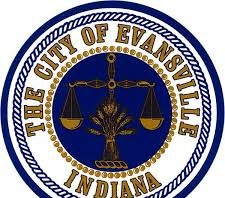A thread on the question-and-answer website Quora discussed the stark differences between dog ownership in the 1970s compared with today.
That made me remember the time my family’s beloved dog, Jingles, ran away.
Jingles was part collie, a touch of Irish setter and goodness knows what else —- and I had no idea how lucky my family was to have her.
Throughout much of American history, according to LiveScience.com, only the wealthy kept pets as companions.
Before the 1960s and ’70s, few people in cities could afford dogs, particularly during the Depression years.
But after World War II, as Americans became more affluent and moved to the suburbs, more families had the means to care for dogs.
By the early ’70s, the family dog was fairly common —- though it was an era of the rough-and-tumble dog, like Lassie and Old Yeller, not the pampered pets that are commonplace today.
Jingles was loved unconditionally, but the only pampering she got was a rub on her belly —- she loved that —- or having her coat combed with a wire brush.
Though she never got treats from the gourmet pet aisle at the supermarket, she loved her daily can of Ken-L Ration and the occasional leftover burger.
She also enjoyed a freedom that few pets ever get to know.
My father was adamant that Jingles never be chained. He only agreed to get her if we taught her stay in the yard as our neighbor, Mr. Bennett, taught his dog to do.
We followed Mr. Bennett’s techniques and Jingles learned the boundaries of our yard well enough. But she suffered from wanderlust and felt the need, now and then, to set off for the hills.
If she wasn’t home by dusk, my father, grumbling, would get into our Plymouth station wagon and drive around the neighborhood calling her name. He’d usually find her within 30 minutes —- usually outside the convenience store soliciting treats from customers.
“You get home right now, girl!†he’d say, pointing his finger. She’d sprint home ahead of him and greet him as he pulled in the driveway, her body shaking, her tail wagging.
But one night, after she ran off, my father couldn’t find her. He called the police and animal rescue, but there had been no reports.
My five sisters and I sobbed most of the night, worrying about Jingles’ fate.
I rode my bike several miles the next day searching for her. That night my father and I drove around for several hours more, but we couldn’t find her.
By the third day of her absence, a tremendous funk settled over our home —- was she gone forever?
As I lay in bed sobbing that night, I heard the faucet dripping in the kitchen, a couple squabbling a few blocks away, Johnny Carson’s monologue playing on someone’s television over the next hill.
Then I heard her barking.
I jumped out of bed and raced downstairs and out the front door. I met her in front of the Kerns’ house. I was crying as I held her in my arms, the two of us rolling around under the street lamp.
She was covered with mud and burrs. She smelled like a skunk. I didn’t care.
Soon, the rest of my family was awake and outside hugging her, overcome with incredible relief.
That happened in the summer of 1974, when dogs were free to roam and sometimes break our hearts, but always fill us with joy and happiness.
In any event, Jingles’ life reflects the stark differences between dog ownership in the middle-class ’70s and the incredibly pampered purebred dogs of today that often are owned by Americans with incredible affluence.
With our declining middle class, regrettably, there aren’t as many rough-and-tumble mutt dogs like Jingles around anymore.
—–




You are mistaken Tom on some time frame and income issues. My family and my mom’s family too (mom being born in 1917) always had a dog. It was a house dog who was safer than a dog outside all the time who could have been hit by a car or attacked by a coyote. But it was not loved any less than your wonderful Jingles. And this passion for dogs in our home started with my grandmother in the 1920s. We did not have lots of money either — decidedly lower middle class. But our dogs were and still are forever family. I was very blessed to learn by example to love all animals from both my parents. My mother was the neighborhood animal nurse. Any sick or injured bird, squirrel, rabbit, turtle, cat, dog or what ever was brought to her and most of the time left her charge healed and on its way to a good life. Isn’t it wonderful to have such great animal memories!
Comments are closed.